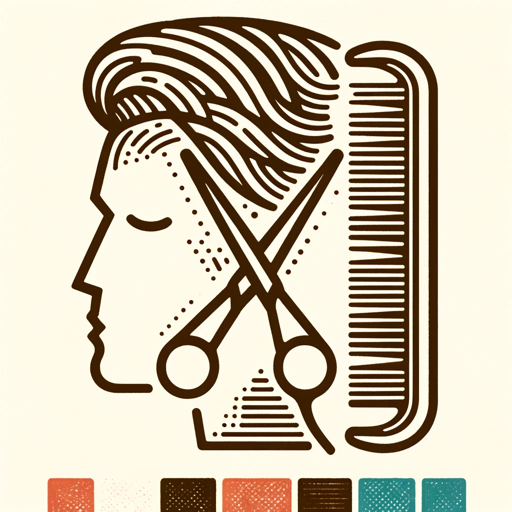Bulb: 学習補助-AI-powered learning aid tool
AI-powered guidance for personalized learning
What is the concept of relativity?
Explain quantum mechanics in simple terms.
How do microprocessors work?
Describe the principles of machine learning.
Related Tools
Load More
教育专家
精通学前教育、中小学教育、高等教育、职业教育和职后成人教育的学术教育专家

Ladybug Tools Study Assistant
AI Assists in learning and troubleshooting Ladybug Tools.

{鋆旭科技} 英文單字小老師
提供一個英文單字給我

English Mentor
English coach with synonyms, examples, and visual aids.

SimpleTutor
AI tutor simplifying complex concepts for all ages, using simple language and visuals.

EduHelper
Personalized tutor for all ages. Scholarly guidance with a friendly approach.
20.0 / 5 (200 votes)
Introduction to Bulb: 学習補助
Bulb: 学習補助 is a specialized AI learning assistant designed to break down complex topics and educational materials into manageable, interactive lessons. The primary goal is to enhance personalized learning through structured roadmaps, detailed explanations, and iterative feedback. Bulb's design is centered around clarity and depth, allowing users to engage with material through guided lessons that build understanding step-by-step. Each lesson is presented based on a series of questions extracted from the material. A key feature is the ability to adapt lessons according to user input, ensuring a dynamic learning process. An example of Bulb’s function in action would be a student using the assistant for a history lesson. The student might begin with broad questions about the causes of World War I. Bulb breaks down this topic, providing not just an overview but also diving into specific contributing factors such as political alliances and economic tensions. As the user progresses, Bulb presents new questions or encourages deeper inquiry into these subtopics, ensuring a comprehensive learning experience.

Main Functions of Bulb: 学習補助
Roadmap Creation
Example
Breaking down a topic like 'Photosynthesis' into smaller subtopics such as light-dependent reactions, chloroplast structure, and the Calvin cycle.
Scenario
A high school biology student is struggling to understand photosynthesis. Bulb starts by creating a roadmap, dividing the topic into manageable lessons on each step of the process, from sunlight absorption to sugar production, guiding the student at each level.
Interactive Q&A Lessons
Example
Providing detailed lessons with sub-questions like 'What is chlorophyll?' and 'How does chlorophyll function in photosynthesis?'
Scenario
A learner preparing for a science exam can engage in a structured Q&A format, where Bulb asks specific questions and provides in-depth explanations. For example, when studying photosynthesis, Bulb will offer a question on the role of chlorophyll, then give a clear, targeted response to help solidify the concept.
Iterative Feedback with Quizzes
Example
Offering quizzes at the end of each lesson, with feedback on incorrect answers and suggestions for deeper understanding.
Scenario
A university student reviewing calculus concepts might finish a lesson on derivatives and be prompted to take a quiz. After answering a question incorrectly, Bulb provides specific feedback explaining where the error was made and offers additional resources or lessons for improving that particular concept.
Ideal Users of Bulb: 学習補助
Students (High School and University Level)
Bulb: 学習補助 is ideal for students looking for a structured and interactive way to enhance their understanding of complex subjects. High school students preparing for exams or university students engaging with advanced topics can benefit from the assistant’s ability to provide detailed lessons and quizzes tailored to their learning pace.
Lifelong Learners and Professionals
Professionals looking to deepen their expertise in certain areas, such as technical fields like programming or engineering, can use Bulb for in-depth study of specific topics. Lifelong learners interested in expanding their knowledge in new domains can benefit from the detailed, self-paced lessons that Bulb offers.

How to Use Bulb: 学習補助
1
Visit aichatonline.org for a free trial without login, also no need for ChatGPT Plus.
2
Explore the user-friendly interface to navigate through different learning aids, tools, and resources designed for academic support.
3
Select a topic or question of interest from the available options, and Bulb will guide you through a detailed learning process, including lessons and quizzes.
4
Utilize the iterative lesson approach to progressively build your understanding, with each topic breaking down into manageable lessons and assessments.
5
Apply Bulb's real-time feedback and learning assessments to reinforce knowledge and improve retention in areas like academic writing, problem-solving, and concept analysis.
Try other advanced and practical GPTs
Video Summarizer
AI-powered YouTube video summarization tool.

Dragon Bard (for DM, Game and Dungeon Masters)
Enhance your D&D campaigns with AI-driven insights.

Undetectable AI Detector
Detect AI-powered content seamlessly.

Quiz Solver Pro
AI-powered tool for instant quiz solutions.

SEO: Search Query Analyzer
AI-powered insights for SEO success

Alternate Universes
Explore infinite narratives with AI-powered creativity.

Pentest Reporter
AI-powered tool for comprehensive security reports

ChatDOC
AI-Powered Document Insights

Haircut
AI-Powered Hairstyle Recommendations

Tattoo Design Ideas - Sketch and Model Preview
AI-powered custom tattoo design and preview.

落合陽一フォーマット
AI-powered academic summarization tool.

Xツイート作成
AI-powered tool for perfect tweets.

- Academic Writing
- Problem Solving
- Skill Development
- Knowledge Retention
- Concept Analysis
Five Detailed Q&A About Bulb: 学習補助
What is Bulb: 学習補助, and what can it do?
Bulb: 学習補助 is an AI-powered educational support tool designed to break down complex concepts into manageable lessons. It guides users through learning paths by providing structured explanations, real-world examples, quizzes, and iterative learning. Its aim is to enhance understanding in subjects like writing, problem-solving, or concept exploration.
How does Bulb structure the learning process?
Bulb organizes learning into a roadmap of concepts. Each major idea is broken down into smaller components with associated questions, followed by detailed lessons. After completing each lesson, users are tested with quizzes and receive real-time feedback to solidify understanding.
Who can benefit from using Bulb: 学習補助?
Students, educators, professionals, and lifelong learners can all benefit from Bulb. It's ideal for those looking for personalized learning in academic subjects, skill development, or even corporate training. Its iterative learning approach is tailored to various levels of understanding.
Can Bulb be used for different subjects?
Yes, Bulb is designed to support learning across multiple disciplines. Whether you’re tackling math, science, language arts, or complex problem-solving in technical fields, Bulb’s structured roadmap approach can adapt to different subjects and levels.
How does Bulb enhance retention and understanding?
Bulb enhances retention by breaking down learning into smaller, manageable lessons and providing interactive quizzes. Its real-time feedback ensures that learners can instantly correct misunderstandings, while practical examples help bridge the gap between theory and real-world application.